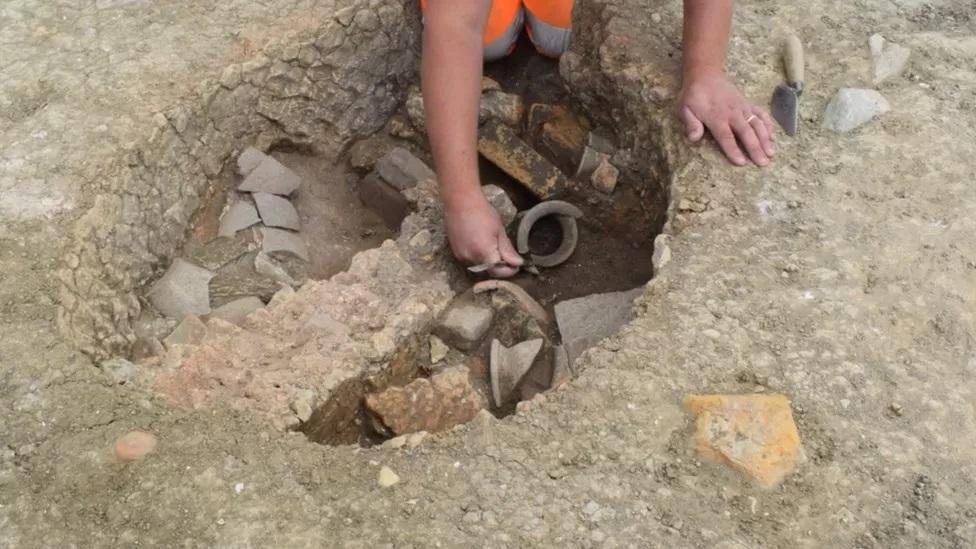A team of archaeologists discovered a Roman cemetery with decapitated skeletons. Excavations at the site were in preparation for the construction of new homes in Wintringham, Cambridgeshire, near St Neots.
 Credit: Oxford Archaeology
Credit: Oxford Archaeology
The team, which hailed from Oxford Archaeology, discovered 17 skeletons dating back to the 3rd century C.E. The skulls of 11 of the skeletons were placed at their feet. The skeletons were also buried with pottery, as was a customary burial practice of the time.
The discovery, included evidence of Roman and Iron Age settlements. Archaeologists discovered an Iron Age settlement with 40 roundhouses and structures related to farming activity.
During the Roman period, the area was a patchwork of small farms and expanding settlements, linked together by a network of roads that connected the settlements to the town of Durovigutum.
 Credit: Oxford Archaeology
Credit: Oxford Archaeology
A cache of Roman coins, brooches, a large lead lid or platter, and several pottery vessels were also uncovered by the Oxford Archaeology team.
There was also a Roman kiln and a large number of quern and millstones, which were used to grind grains.
“The find had “revealed amazing insights into the people of the area,” Patrick Moan, an Oxford professor of archaeology and the project manager, told the BBC. “These results add greatly to our understanding of the local landscape’s history which we can now share with local communities,”
Specialists will now examine the remains to provide new insights into the burial practices of people who lived in the area during Roman times.
The discovery will be featured in episode three of Digging for Britain on BBC Two.





